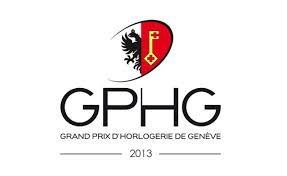The Urwerk EMC - Electronic Mechanical Control. A watch that allows the owner to measure the accuracy of the watch and then make adjustments to fine tune the watch to function better.
A definite departure from the now "normal" expectation of Urwerk's complicated rotating discs. This creation is intended to expand their line of offering in the world of high complication. Traditionally, an owner needs to have a watch timing machine to tell how well regulated the watches are. And even then, one needs to open up the watch to regulate it thereafter. The EMC does all that without having to open the watch!
Development took three years - one year to design and develop a balance wheel that will allow "optical" measurements and another 2 years to put everything together. Felix Baumgartner - the technical wizard and co-founder of Urwerk said he had to go through several designs of the balance wheel and finally settled for a totally flat balance wheel. The movement also incorporates a serial twin barrel bearing 80 hours power reserve. Packed into a 43x51mm titanium steel case, the watch is very wearable. The 4 o'clock dial displays the hours and minutes while the 2 o'clock dial presents the seconds. The 8 o'clock dial shows the power reserve and the 11 o'clock dial is the timing deviation indicator.

The heart of the timing machine in the EMC is a computer - an electronic oscillator. When the start button is depressed, the optical sensor takes the measurement over 3 seconds and the results are compared against the oscillator to obtain the most accurate measurement possible. The results are then shown on the dial (10 o'clock position) indicating +20 to -20 seconds per day deviation. The wearer then makes the adjustment with a tool at the back of the watch. The computer is found to the right side (yellow colour) of the words Fine Tuning.

A brilliant idea! A fully interactive mechanical watch. The oscillator may be electronic but the watch movement and the regulation is fully mechanical. The oscillator does not affect the performance in anyway other than to measure the rate. The rest of the watch is just a regular mechanical marvel.

To power the oscillator, a micro-generator is also built into the watch. The crank shaft on the side of the watch allows the wearer to wind it to power the generator. 10 to 20 winds later, the generator is fully powered.

This is definitely a first the the watch industry. A wearable timing machine that also allows the wearer to self-regulate. Felix told me that Urwerk likes to push boundaries and the EMC clearly shows that Urwerk is setting the pace. The movement is called UR-EMC and is in-house developed. The manual winding movement comes with Côtes de Genève finishing.

And finally a wristshot of the EMC and the UR-210 on Felix.

Thanks to The Hourglass for making the shoot possible. And thanks to Felix an Urwerk for making time to share this exciting development.










